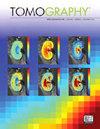Reporting Diagnostic Reference Levels for Paediatric Patients Undergoing Brain Computed Tomography
IF 2.2
4区 医学
Q2 RADIOLOGY, NUCLEAR MEDICINE & MEDICAL IMAGING
引用次数: 0
Abstract
Brain computed tomography (CT) is a diagnostic imaging tool routinely used to assess all paediatric neurologic disorders and other head injuries. Despite the continuous development of paediatric CT imaging, radiation exposure remains a concern. Using diagnostic reference levels (DRLs) helps to manage the radiation dose delivered to patients, allowing one to identify an unusually high dose. In this paper, we propose DRLs for paediatric brain CT examinations in Saudi clinical practices and compare the findings with those of other reported DRL studies. Data including patient and scanning protocols were collected retrospectively from three medical cities for a total of 225 paediatric patients. DRLs were derived for four different age groupings. The resulting DRL values for the dose–length product (DLP) for the age groups of newborns (0–1 year), 1-y-old (1–5 years), 5-y-old (5–10 years) and 10-y-old (10–15 years) were 404 mGy cm, 560 mGy cm, 548 mGy cm, and 742 mGy cm, respectively. The DRLs for paediatric brain CT imaging are comparable to or slightly lower than other DRLs due to the current use of dose optimisation strategies. This study emphasises the need for an international standardisation for the use of weight group categories in DRL establishment for paediatric care in order to provide a more comparable measurement of dose quantities across different hospitals globally.报告儿科患者接受脑计算机断层扫描的诊断参考水平
脑计算机断层扫描(CT)是一种常规用于评估所有儿科神经系统疾病和其他头部损伤的诊断成像工具。尽管儿科CT成像技术不断发展,但辐射暴露仍然是一个问题。使用诊断参考水平(DRLs)有助于管理给病人的辐射剂量,使人们能够确定异常高的剂量。在本文中,我们建议在沙特临床实践中进行儿童脑CT检查的DRL,并将结果与其他报道的DRL研究进行比较。回顾性收集来自三个医疗城市共225名儿科患者的数据,包括患者和扫描方案。drl是针对四个不同年龄组得出的。新生儿(0-1岁)、1岁(1-5岁)、5岁(5-10岁)和10岁(10-15岁)年龄组的剂量长度产物(DLP) DRL值分别为404、560、548和742 mGy cm。由于目前使用的剂量优化策略,儿童脑CT成像的drl与其他drl相当或略低。本研究强调需要在儿科护理DRL建立中使用体重组类别进行国际标准化,以便在全球不同医院之间提供更具可比性的剂量量测量。
本文章由计算机程序翻译,如有差异,请以英文原文为准。
求助全文
约1分钟内获得全文
求助全文
来源期刊

Tomography
Medicine-Radiology, Nuclear Medicine and Imaging
CiteScore
2.70
自引率
10.50%
发文量
222
期刊介绍:
TomographyTM publishes basic (technical and pre-clinical) and clinical scientific articles which involve the advancement of imaging technologies. Tomography encompasses studies that use single or multiple imaging modalities including for example CT, US, PET, SPECT, MR and hyperpolarization technologies, as well as optical modalities (i.e. bioluminescence, photoacoustic, endomicroscopy, fiber optic imaging and optical computed tomography) in basic sciences, engineering, preclinical and clinical medicine.
Tomography also welcomes studies involving exploration and refinement of contrast mechanisms and image-derived metrics within and across modalities toward the development of novel imaging probes for image-based feedback and intervention. The use of imaging in biology and medicine provides unparalleled opportunities to noninvasively interrogate tissues to obtain real-time dynamic and quantitative information required for diagnosis and response to interventions and to follow evolving pathological conditions. As multi-modal studies and the complexities of imaging technologies themselves are ever increasing to provide advanced information to scientists and clinicians.
Tomography provides a unique publication venue allowing investigators the opportunity to more precisely communicate integrated findings related to the diverse and heterogeneous features associated with underlying anatomical, physiological, functional, metabolic and molecular genetic activities of normal and diseased tissue. Thus Tomography publishes peer-reviewed articles which involve the broad use of imaging of any tissue and disease type including both preclinical and clinical investigations. In addition, hardware/software along with chemical and molecular probe advances are welcome as they are deemed to significantly contribute towards the long-term goal of improving the overall impact of imaging on scientific and clinical discovery.
 求助内容:
求助内容: 应助结果提醒方式:
应助结果提醒方式:


